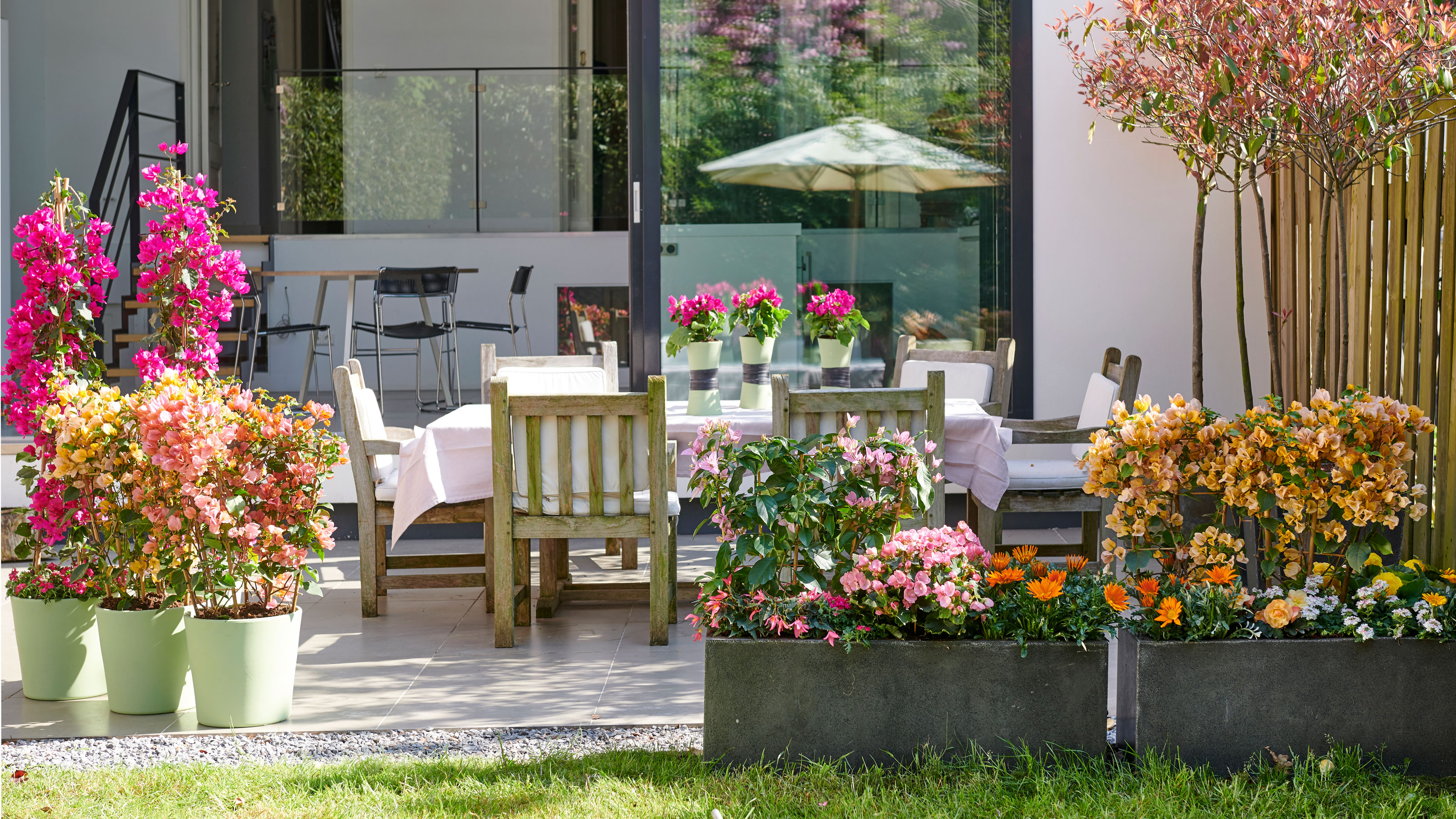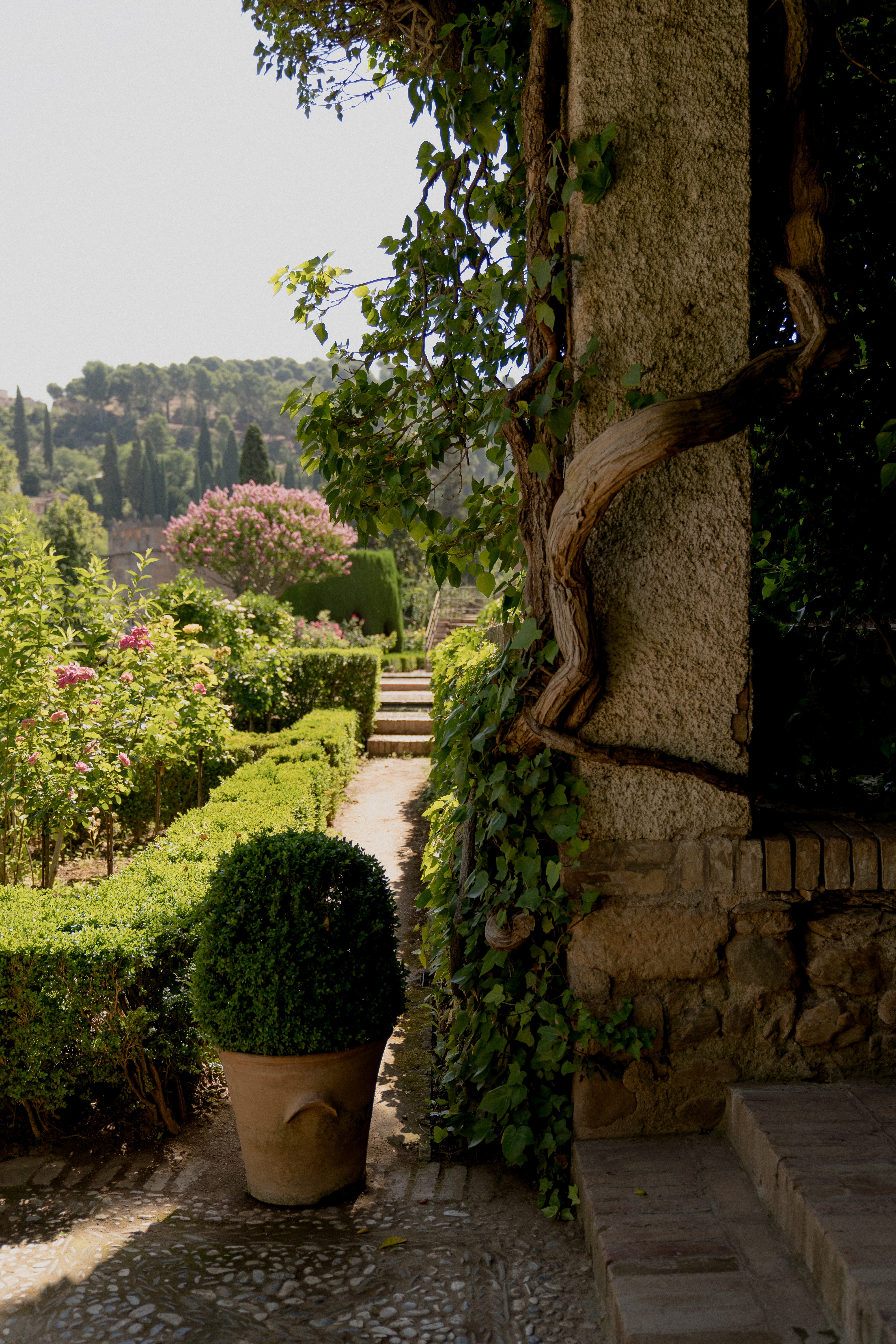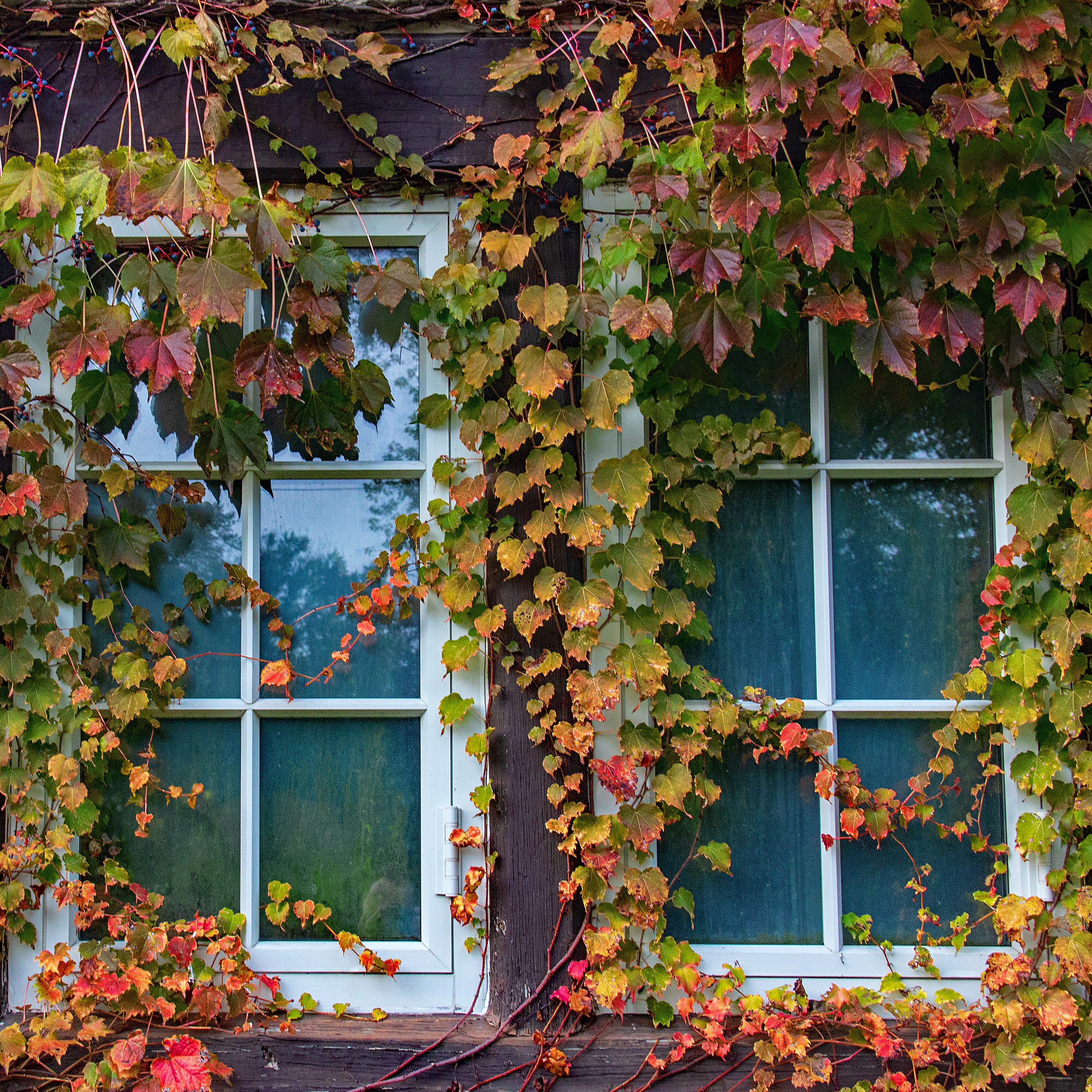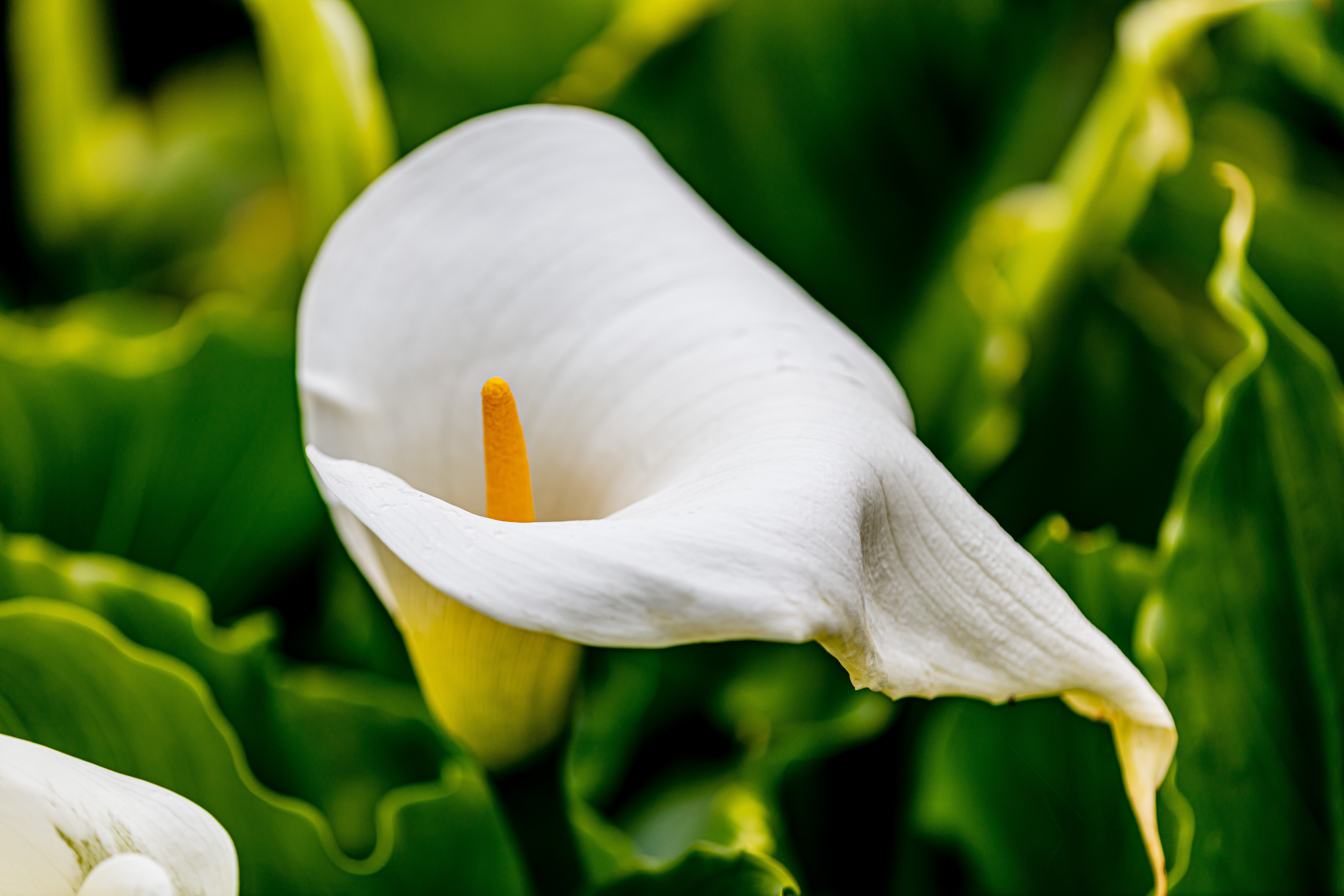7 plants to avoid growing in your garden – from the destructive to the poisonous and the pest-ridden
Experts explain which plants to avoid growing at home to keep your garden safe, pest-free and without invasive species


Everyone loves a lush, healthy garden but cultivating one is not as simple as it may seem. If you're a first-time gardener, or have little or no knowledge about growing plants, then it's advisable to speak to an expert or do a little research before choosing what you'll plant in your outdoor patch. After all, you don't want to be looking down at a garden that ends up being more of a problem than a pleasure.
'It’s a great time of year for gardens, and plants should be popping up left, right, and center,' says Jo Lambell, founder of Beards & Daisies and author of The Unkillables. 'But be careful. While some plants may seem eye-catching, they can be invasive or poisonous.'
It may be surprising to a few, but certain varieties can cause hay fever, rashes, hives, and blisters. Some can deplete the water levels, crack the walls or even weaken your home's foundation. Find out which plants to exclude from your backyard idea plans with our expert guide.
7 plants to steer clear of in your garden
For a happy, healthy garden, you need to find plants that give you the look you want and that are unlikely cause problems. Usually, popular annuals, perennials, and shrubs are known to trigger reactions more than other plants. Usually, Pansies, African daisies, Nasturtiums, Alliums, and succulents are easy to grow and are safe plants to cultivate.
These apart, take note of the plants that are likely to be a cause for concern.
1. Buxus

'Buxus, or Box, has long been a staple of the traditional garden, used for edging beds and pathways and clipped neatly into pleasing architectural shapes,' say Annie and Jemma Charman, founders of Green Rooms. 'However, in recent years, it has been plagued by the box caterpillar which will quickly ravage the plant, leaving it brown, covered in webbing, and unsalvageable.'
A way to find out if the plant is diseased, infected, or dying, is when leaves and shoots turn dark brown and start shriveling and falling. This can happen over several months or quite suddenly as well.
The Livingetc newsletters are your inside source for what’s shaping interiors now - and what’s next. Discover trend forecasts, smart style ideas, and curated shopping inspiration that brings design to life. Subscribe today and stay ahead of the curve.
Try instead: Garden trends are moving towards growing more sustainable plants that are easy to cultivate and do not harm the landscape around. 'Instead of taking the risk, opt for Ilex crenata (Japanese Holly) or Pittosporum tenuifolium Golf Ball, both of which have small leaves and a dense growth like Box and can be neatly trimmed and shaped in the same way,' say Annie and Jemma.
2. Water Hemlock
'Some of the most dangerous plants are frustratingly among the most beautiful,' says Whitney Bromberg Hawkings, CEO, and co-founder of FLOWERBX. 'Water Hemlock (Cicuta), which bears a close resemblance to Cow’s Parsley can be found dotted across the countryside the second the sun comes out, but can also be fatal to animals and humans alike within minutes of ingestion. It contains a highly poisonous chemical that is lethal if ingested, not to mention its strong carrot-like odor which makes it a garden foe.'
This plant typically grows in wet, marshy places and is often confused for its non-poisonous lookalikes such as wild carrots or parsnips. If accidentally ingested, the symptoms of poisoning are displayed by seizures, nausea, vomiting, abdominal pain, tremors, confusion, weakness, or dizziness.
Try instead: Consider Water Parsnip which looks similar to the Water Hemlock. This herb with divided leaves and clusters of white flowers can be cultivated for its edible tuberous roots.
3. Japanese Knotweed
'Japanese knotweed is an invasive plant with bamboo-like red shoots and shovel-shaped leaves,' says Bradley MacKenzie of Stokemont. 'It can grow up to 10 feet tall in spring and summer. But the worst part about this plant is that its roots can reach down to 65 feet underground.'
'The spread of Japanese knotweed underground could destroy pipework and drains and weaken building foundation or paving, leading to foundational collapse and poor flood defenses,' says Bradley. 'It is important to check and take immediate and thorough eradication actions before it gets too late. We would highly recommend you seek professional help when removing them as they re-establish easily from even the smallest remains. If you prefer doing it yourself, pesticide would be the most effective method to kill those zombie-like plants!'
Try instead: Woody Shrubs & trees or Houttuynia cordata are great alternatives to Japanese knotweed. The latter is usually grown as a leaf vegetable, used for garnish. If you like the idea of growing your herbs, you could consider cultivating dill plants, or even mint.
4. Azalea

Azaleas or flowering shrubs produce beautiful flowers, filling up entire bushes. They are easy to grow, making them ideal for cultivating under trees. These are usually slow-growing, but once they bloom, require regular trimming of their large, leathery leaves. They do have one issue though.
'Surprisingly for most, the much loved, vibrant Azalea and Rhododendron which flower throughout the fall can cause severe sickness in dogs, cats, and horses including acute digestive disturbance,' says Whitney. 'They have also been used historically in chemical warfare and can lead to severe breathing issues, paralysis, coma, and death if ingested by humans.'
Try instead: Several other flowering shrubs provide abundant and fragrant foliage. Rhododendrons are aesthetic, can be large-leaved or small-leaved, and comprise flowering shrubs of various sizes. Hydrangeas can grow up to 22 feet in height and can develop into attractive bouquet-like formations, plus are easy to take care of, especially when cut and placed inside vases.
Viburnum is also a popular flowering shrub that may not produce flowers as lush as azaleas, hydrangeas, or rhododendrons, but still provide splendor to gardens.
5. English ivy

English ivy is the most heard-about plant, and while it looks great in a garden, it can quickly become invasive and dangerous. It can spread rapidly across the garden, killing off your other plants. It also can pose health risks, as it is somewhat poisonous, and can cause itchy skin or dermatitis.
'Commonly seen across Europe, English Ivy is dangerous to your house,' says Bradley. 'With a strong wall-climbing ability, this garden invader could easily penetrate your wall cracks, damage the mortar, and bring dampness or leaks to the house.'
'English Ivy can be removed with bare hands by peeling them carefully off the wall,' says Bradley. 'It is also possible to kill them by cutting their roots off and letting them dry out. However, not all wall-climbing plants are harmful, such as Boston Ivy, so we recommend consulting a professional before mistakenly cutting some beautiful and safe plants from your wall.'
Try instead: Since English ivy is essentially a creeper, you could look at other creepers or vines to substitute, such as climbing hydrangea, trumpet creeper, Virginia creeper, or Passionflower vine. For these creepers to truly shine, ensure you grow them on your garden fence for a decorative touch, or on your outdoor walls.
6. Giant Hogweed
The Giant Hogweed or Heracleum mantegazzianum can be biennial or perennial. It produces white flowers held in umbels, all facing upwards. The flower heads can be as large as 60cm. The plant contains high levels of furanocoumarins, a chemical that causes a burning sensation on the skin.
'Keep your eyes peeled for Giant Hogweed, an invasive species that resembles cow parsley and can grow up to 16 feet tall,' says Jo Lambell of Beards & Daisies. 'Its sap can cause burns, so if you come across it, wear gloves and protect your skin when removing it.'
Try instead: If you want to start a flower garden, look for healthier, sustainable alternatives. 'A lovely substitute with similar lacy white flowers and tall billowing stems is Ammi Majus (False Bishop’s weed) or for an injection of limey yellow color with a similar starburst shaped flower head try Anethum graveolens,' say Annie & Jemma.
7. Arum Lily

This is an evergreen plant usually found in sub-tropical climates that get rain year-round, and have relatively mild winters. The leaves are 14 to 16 inches long, glossy and green. The flowers, usually in shades of white, pink, yellow, or purple not only make for popular houseplants, but also last long as cut flowers.
'Zantedeschia aethiopica (Arum Lily) is often found in shady, damp areas and admired for their striking trumpet-shaped flowers,' say Annie and Jemma. 'They are deemed invasive due to the rate that they set seed and can cause natural waterways to become clogged. The berries are poisonous when eaten and the leaves are an irritant when touched.'
Try instead: 'A very similar alternative is the close relative; Calla Lily,' says Annie and Jemma. 'Although still a plant that you don’t want to go eating, they have similar trumpet-shaped flowers, are not invasive, and come in a huge variety of colors.'

Aditi Sharma Maheshwari started her career at The Address (The Times of India), a tabloid on interiors and art. She wrote profiles of Indian artists, designers, and architects, and covered inspiring houses and commercial properties. After four years, she moved to ELLE DECOR as a senior features writer, where she contributed to the magazine and website, and also worked alongside the events team on India Design ID — the brand’s 10-day, annual design show. She wrote across topics: from designer interviews, and house tours, to new product launches, shopping pages, and reviews. After three years, she was hired as the senior editor at Houzz. The website content focused on practical advice on decorating the home and making design feel more approachable. She created fresh series on budget buys, design hacks, and DIYs, all backed with expert advice. Equipped with sizable knowledge of the industry and with a good network, she moved to Architectural Digest (Conde Nast) as the digital editor. The publication's focus was on high-end design, and her content highlighted A-listers, starchitects, and high-concept products, all customized for an audience that loves and invests in luxury. After a two-year stint, she moved to the UK and was hired at Livingetc as a design editor. She now freelances for a variety of interiors publications.